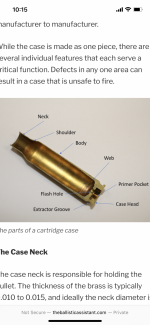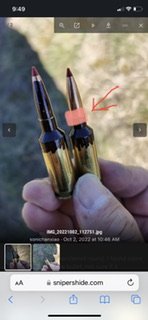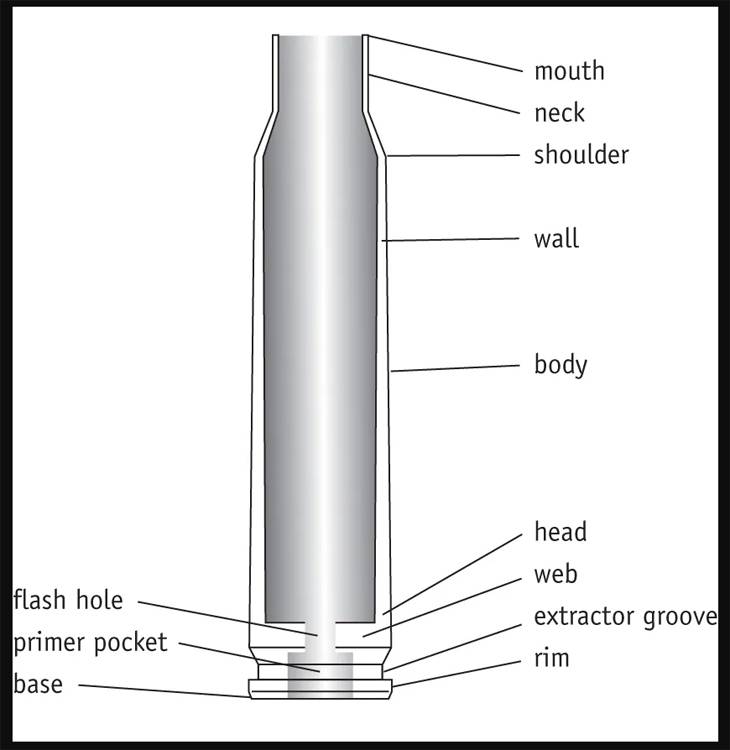I got a batch of loaded 6 dasher using 3 times fired(from my rifle) alpha 6 dasher brass. About half of the batch started having chambering issue today.
The problem is the bolt cannot be closed.
70% of the unchambered rounds can be extracted using the bolt's extractor, the rest 30% need to use cleaning rod or some kind of tool to pull from the back.
I compared FL resized brass with fired brass, 0.002inch difference, so I reckon resize part should be good.
Then I measured neck diamater(outside the neck), it is almost identical between unchambered round and round can be chambered.
I also checked the ogive between rounds can be chambered and cannot be chambered, it is.the same.
Lastly, I checked the outer diameter close to the extractor grove between fired and unchambered, it's almost identical.
Same load has been fired in the same rifle few months ago.
And same thing happened on a 308win rifle too, only differenc is on the 195gr ELD bullet of the 308 unchambered rounds, there is some scratches, which I thought could be seating depth issue, but will need to verify this shortly. No marks on the 6 dasher ELD 108gr bullet.
But for the 6 dasher's chambering issue, any suggestion or direction would be really appreciated.
UPDATE:
I also pull the bullet out of a loaded round but could not chamber, compared the headapace it is same as FL resized brass, but even the unloaded brass with only primer can not be chambered, so it was able to fire last time, but after resize 0.002inch, it.can not be chambered, how does this make sense?
UPDATE 2:
So I pulled all of the unchambered rounds, FL resized, check chambering, no problem, expand using .242 mandral, chamber no problem, charge then seat the ELD 108gr bullet about 0.025inch from lands, check chambering, some still could not chamber.
I don't get it, how could seating bullet causing loaded rounds not chambering? And it seems this only happened randomly within the same batch.
The problem is the bolt cannot be closed.
70% of the unchambered rounds can be extracted using the bolt's extractor, the rest 30% need to use cleaning rod or some kind of tool to pull from the back.
I compared FL resized brass with fired brass, 0.002inch difference, so I reckon resize part should be good.
Then I measured neck diamater(outside the neck), it is almost identical between unchambered round and round can be chambered.
I also checked the ogive between rounds can be chambered and cannot be chambered, it is.the same.
Lastly, I checked the outer diameter close to the extractor grove between fired and unchambered, it's almost identical.
Same load has been fired in the same rifle few months ago.
And same thing happened on a 308win rifle too, only differenc is on the 195gr ELD bullet of the 308 unchambered rounds, there is some scratches, which I thought could be seating depth issue, but will need to verify this shortly. No marks on the 6 dasher ELD 108gr bullet.
But for the 6 dasher's chambering issue, any suggestion or direction would be really appreciated.
UPDATE:
I also pull the bullet out of a loaded round but could not chamber, compared the headapace it is same as FL resized brass, but even the unloaded brass with only primer can not be chambered, so it was able to fire last time, but after resize 0.002inch, it.can not be chambered, how does this make sense?
UPDATE 2:
So I pulled all of the unchambered rounds, FL resized, check chambering, no problem, expand using .242 mandral, chamber no problem, charge then seat the ELD 108gr bullet about 0.025inch from lands, check chambering, some still could not chamber.
I don't get it, how could seating bullet causing loaded rounds not chambering? And it seems this only happened randomly within the same batch.
Last edited:




